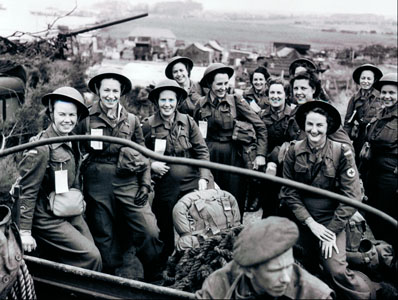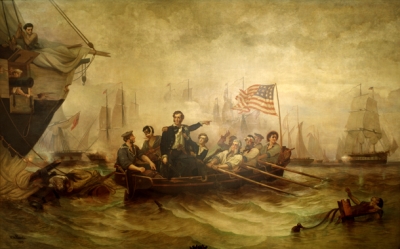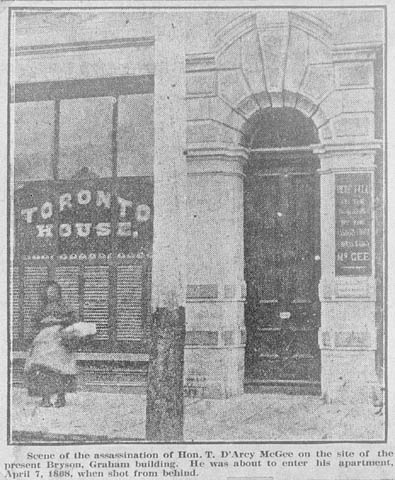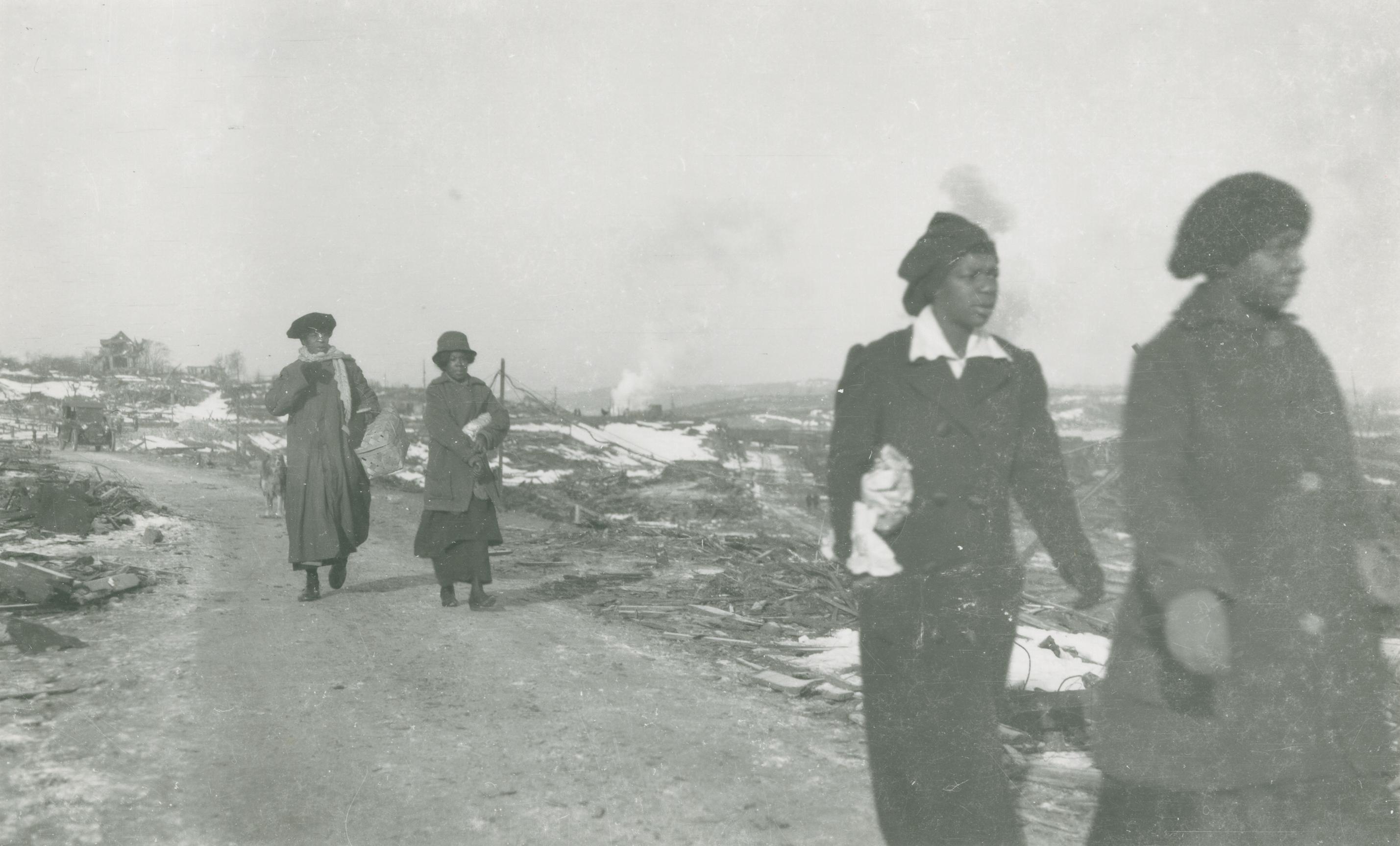Browse "History/Historical Figures"
-
Article
Nursing Sisters and the Costs of War on Women
We celebrate the heroism and mourn the sacrifices of our military through two world wars, and assorted other foreign conflicts and peacekeeping missions. Yet less attention has been paid to the related efforts of women — in particular, the nurses who have built their own proud tradition of service and sacrifice.
"https://d2ttikhf7xbzbs.cloudfront.net/media/media/6c14215f-fcdf-40f6-8934-c77072c307ec.jpg" // resources/views/front/categories/view.blade.php
https://d2ttikhf7xbzbs.cloudfront.net/media/media/6c14215f-fcdf-40f6-8934-c77072c307ec.jpg
-
Article
Oliver Hazard Perry
Oliver Hazard Perry, American naval officer, known as the hero of Lake Erie (b at South Kingston, Rhode Island, 23 Aug 1785; d at sea near Trinidad and Tabago, 23 Aug 1819).
"https://d2ttikhf7xbzbs.cloudfront.net/media/media/3560172b-cdd9-4501-9ff1-bf1f12b05bd2.jpg" // resources/views/front/categories/view.blade.php
https://d2ttikhf7xbzbs.cloudfront.net/media/media/3560172b-cdd9-4501-9ff1-bf1f12b05bd2.jpg
-
Article
Olivier Le Jeune
We may never know the exact number of British ships that carried enslaved people from the continent of Africa to the New World (see Black Enslavement in Canada). However, the earliest record of enslaved Black Africans in New France is the sale of a boy from either Madagascar or Guinea. In 1629, the child, believed to have been around six years old, was brought to New France aboard a British ship as the chattel slave of Sir David Kirke, a trader and privateer for England’s King Charles I. The boy was later sold to a French clerk named Olivier Le Baillif, and then transferred to Guillaume Couillard. In 1633, the enslaved boy was baptized and given the name Olivier Le Jeune. Le Jeune remained in the colony of New France for the rest of his life until he died on 10 May 1654.
"https://d2ttikhf7xbzbs.cloudfront.net/media/media/10e1983c-bdbe-4650-9121-50dd7f143f28.jpg" // resources/views/front/categories/view.blade.php
https://d2ttikhf7xbzbs.cloudfront.net/media/media/10e1983c-bdbe-4650-9121-50dd7f143f28.jpg
-
Article
Ounanguissé
Ounanguissé (“Shimmering Light of the Sun,” also spelled Onangizes, Onanguisset and Onanguicé) was wkama (leader) of the Potawatomi ca. 1660s–1701. He was an important figure in the alliance between the French and Indigenous people of the Great Lakes region during the late 17th and early 18th centuries. He is most well known for a speech he gave regarding this alliance during a meeting he had with the governor general of New France, Louis de Buade de Frontenac in 1697. He also made an important contribution to the establishment of the Great Peace of Montreal in 1701.
"https://development.thecanadianencyclopedia.ca/images/tce_placeholder.jpg?v=e9dca980c9bdb3aa11e832e7ea94f5d9" // resources/views/front/categories/view.blade.php
https://development.thecanadianencyclopedia.ca/images/tce_placeholder.jpg?v=e9dca980c9bdb3aa11e832e7ea94f5d9
-
Article
Overlanders of 1862
The Overlanders of 1862 were a group of some 150 settlers who travelled from Fort Garry (now Winnipeg, Manitoba) to the interior of British Columbia, following the Cariboo Gold Rush. They were led by Thomas McMicking of Stamford Township, Welland County, Canada West [Ontario].
"https://d2ttikhf7xbzbs.cloudfront.net/media/new_article_images/CatherineSchubert/Tales_Campfire_Hind.jpg" // resources/views/front/categories/view.blade.php
https://d2ttikhf7xbzbs.cloudfront.net/media/new_article_images/CatherineSchubert/Tales_Campfire_Hind.jpg
-
Article
Culture of Early Indigenous Peoples in Canada
The arrival of early Indigenous peoples in Canada has varying explanations both outside of and within the field of archaeology (see History of Early Indigenous Peoples in Canada). Many Indigenous Oral Traditions state that Indigenous peoples have been on the land that is now known as North America since time immemorial. There is a debate within the field of archaeology on the first arrival of early Indigenous peoples, with dates ranging from as recently as 12,000 years ago to as long ago as 130,000 years ago.
"https://d2ttikhf7xbzbs.cloudfront.net/media/media/f28e80bc-14da-4c69-b71c-6e16f91ed72d.jpg" // resources/views/front/categories/view.blade.php
https://d2ttikhf7xbzbs.cloudfront.net/media/media/f28e80bc-14da-4c69-b71c-6e16f91ed72d.jpg
-
Article
Patriation of the Constitution
In 1982, Canada “patriated” its Constitution. It transferred the country’s highest law, the British North America Act (which was renamed the Constitution Act, 1867), from the authority of the British Parliament to Canada’s federal and provincial legislatures. The Constitution was also updated with a new amending formula and a Charter of Rights and Freedoms. These changes occurred after a fierce, 18-month political and legal struggle that dominated headlines and the agendas of every government in the country.
"https://development.thecanadianencyclopedia.ca/images/tce_placeholder.jpg?v=e9dca980c9bdb3aa11e832e7ea94f5d9" // resources/views/front/categories/view.blade.php
https://development.thecanadianencyclopedia.ca/images/tce_placeholder.jpg?v=e9dca980c9bdb3aa11e832e7ea94f5d9
-
Article
Patrick James Whelan
Patrick James Whelan, convicted murderer, tailor (born c. 1840 near Dublin, Ireland; died 11 February 1869 in Ottawa, ON). Whelan was arrested for the April 1868 assassination of Member of Parliament and Father of Confederation Thomas D’Arcy McGee. He was convicted in September 1868 and sentenced to death. The authorities suspected that Whelan carried out a Fenian conspiracy to murder McGee and promptly arrested him within 24 hours of the murder; however, it was never fully proved that Whelan was acting as a Fenian sympathizer. Whelan maintained his innocence throughout his trial and until he was hanged publicly in Ottawa in early 1869. There is room for reasonable doubt as to whether Whelan did in fact murder McGee or was simply part of a group of people who did. McGee was the only federal politician to be assassinated, and Whelan one of the last people to be hanged publicly in Canada.
"https://d2ttikhf7xbzbs.cloudfront.net/media/media/a5d0c40e-d494-415c-b5da-bfbd93c55c5c.jpg" // resources/views/front/categories/view.blade.php
https://d2ttikhf7xbzbs.cloudfront.net/media/media/a5d0c40e-d494-415c-b5da-bfbd93c55c5c.jpg
-
Article
Patriotes
The Patriotes was the name given after 1826 to the Parti canadien and to the popular movement that contributed to the Rebellions of 1837-38 in Lower Canada.
"https://d2ttikhf7xbzbs.cloudfront.net/media/media/24c5665d-60e0-424c-86f4-96cf5b7d75c1.jpg" // resources/views/front/categories/view.blade.php
https://d2ttikhf7xbzbs.cloudfront.net/media/media/24c5665d-60e0-424c-86f4-96cf5b7d75c1.jpg
-
Article
Paul de Chomedey, Sieur de Maisonneuve
Paul de Chomedey, Sieur de Maisonneuve, French governor, military officer (born 13 February 1612 in Neuville-sur-Vanne, France; died 9 September 1676 in Paris). Along with Jeanne Mance, he is considered the co-founder of Ville-Marie, the French colonial outpost that grew to become Montreal. Maisonneuve was also the first Governor of Montreal.
"https://d2ttikhf7xbzbs.cloudfront.net/Maisonneuve_Place_darmes.jpg" // resources/views/front/categories/view.blade.php
https://d2ttikhf7xbzbs.cloudfront.net/Maisonneuve_Place_darmes.jpg
-
Article
Paul Mascarene
Paul Mascarene, born Jean-Paul, military officer, colonial administrator (b in Languedoc, France 1684/85; d at Boston, Mass 22 Jan 1760). A Huguenot émigré, Mascarene served throughout New England and Atlantic Canada 1710-40 as a military engineer and fluent negotiator with the Acadians and Indians.
"https://development.thecanadianencyclopedia.ca/images/tce_placeholder.jpg?v=e9dca980c9bdb3aa11e832e7ea94f5d9" // resources/views/front/categories/view.blade.php
https://development.thecanadianencyclopedia.ca/images/tce_placeholder.jpg?v=e9dca980c9bdb3aa11e832e7ea94f5d9
-
Article
Pauline Johnson (Tekahionwake)
Emily Pauline Johnson (a.k.a. Tekahionwake, “double wampum”) poet, writer, artist, performer (born 10 March 1861 on the Six Nations Reserve, Canada West; died 7 March 1913 in Vancouver, BC). Pauline Johnson was one of North America’s most notable entertainers of the late 19th century. A mixed-race woman of Mohawk and European descent, she was a gifted writer and poised orator. She toured extensively, captivating audiences with her flair for the dramatic arts. Johnson made important contributions to Indigenous and Canadian oral and written culture. She is listed as a Person of National Historic Significance and her childhood home is a National Historic Site and museum. A monument in Vancouver’s Stanley Park commemorates her work and legacy. In 2016, she was one of 12 Canadian women in consideration to appear on a banknote. (See Women on Canadian Banknotes.)
"https://d2ttikhf7xbzbs.cloudfront.net/media/media/4c5ce9f8-0ef1-4a75-aa7a-f2f892483bde.jpg" // resources/views/front/categories/view.blade.php
https://d2ttikhf7xbzbs.cloudfront.net/media/media/4c5ce9f8-0ef1-4a75-aa7a-f2f892483bde.jpg
-
Excerpt
People on the Margins of the Halifax Explosion
In the early 20th Century, most North End residents of Halifax perceived themselves as being collectively disadvantaged, compared to wealthier South End residents. However, within the North End certain groups — notably racial minorities, the elderly, non-British immigrants, members of the military, and unmarried women with children — stood out as being particularly vulnerable. They were among the hardest-hit in the aftermath of the Halifax Explosion of 1917.
"https://d2ttikhf7xbzbs.cloudfront.net/media/media/aa48ac21-9af9-44b9-b9de-8e6234022abd.jpg" // resources/views/front/categories/view.blade.php
https://d2ttikhf7xbzbs.cloudfront.net/media/media/aa48ac21-9af9-44b9-b9de-8e6234022abd.jpg
-
Article
Peter Easton
Peter Easton, privateer, pirate (born c. 1570 in England; died c. 1620). Easton visited Newfoundland in 1602, a year before becoming a pirate. He returned to Newfoundland in 1612 and built a fort at Harbour Grace. Easton plundered Basque, Spanish, English, French and Portuguese ships on the Newfoundland coast, in Puerto Rico and at the Azores islands. When pardoned by the English King James I, Easton purchased a castle in Savoy where he lived a life of leisure.
"https://d2ttikhf7xbzbs.cloudfront.net/PeterEaston/CROPTrinityPeterEaston_dreamstime_resize_120577719.jpg" // resources/views/front/categories/view.blade.php
https://d2ttikhf7xbzbs.cloudfront.net/PeterEaston/CROPTrinityPeterEaston_dreamstime_resize_120577719.jpg
-
Article
Peter Fidler
Peter Fidler, fur trader, mapmaker, explorer (b at Bolsover, Eng 16 Aug 1769; d at Fort Dauphin [Man] 17 Dec 1822).
"https://development.thecanadianencyclopedia.ca/images/tce_placeholder.jpg?v=e9dca980c9bdb3aa11e832e7ea94f5d9" // resources/views/front/categories/view.blade.php
https://development.thecanadianencyclopedia.ca/images/tce_placeholder.jpg?v=e9dca980c9bdb3aa11e832e7ea94f5d9
